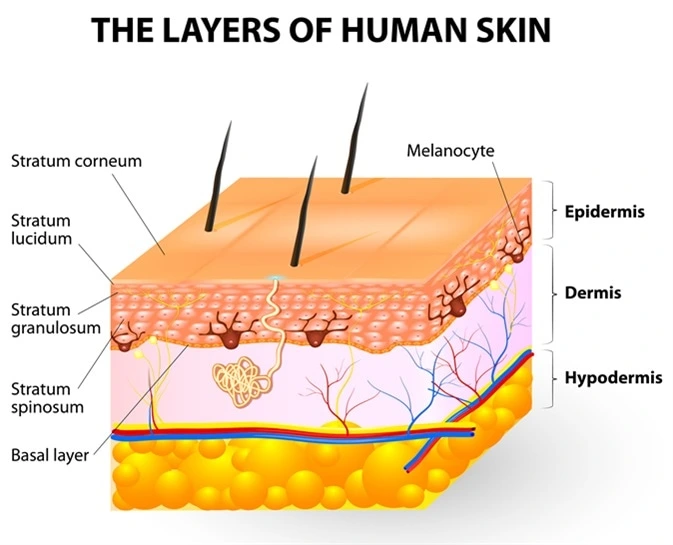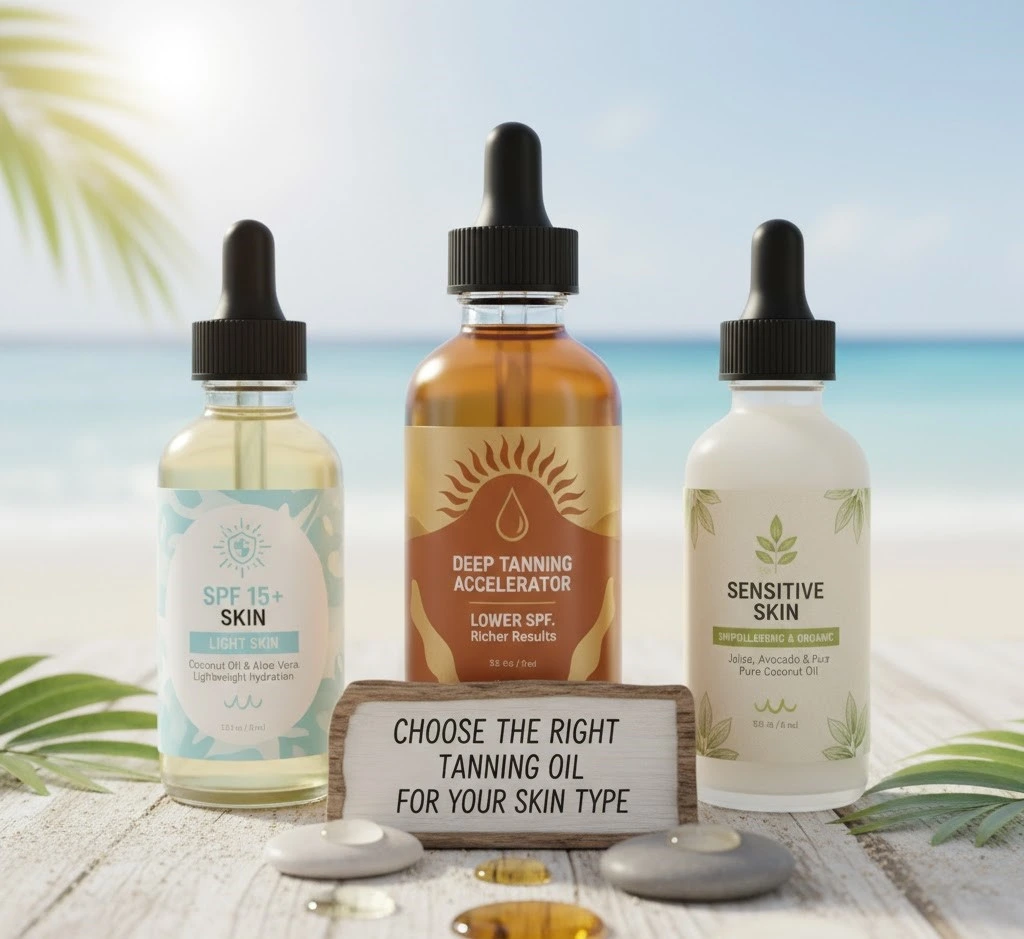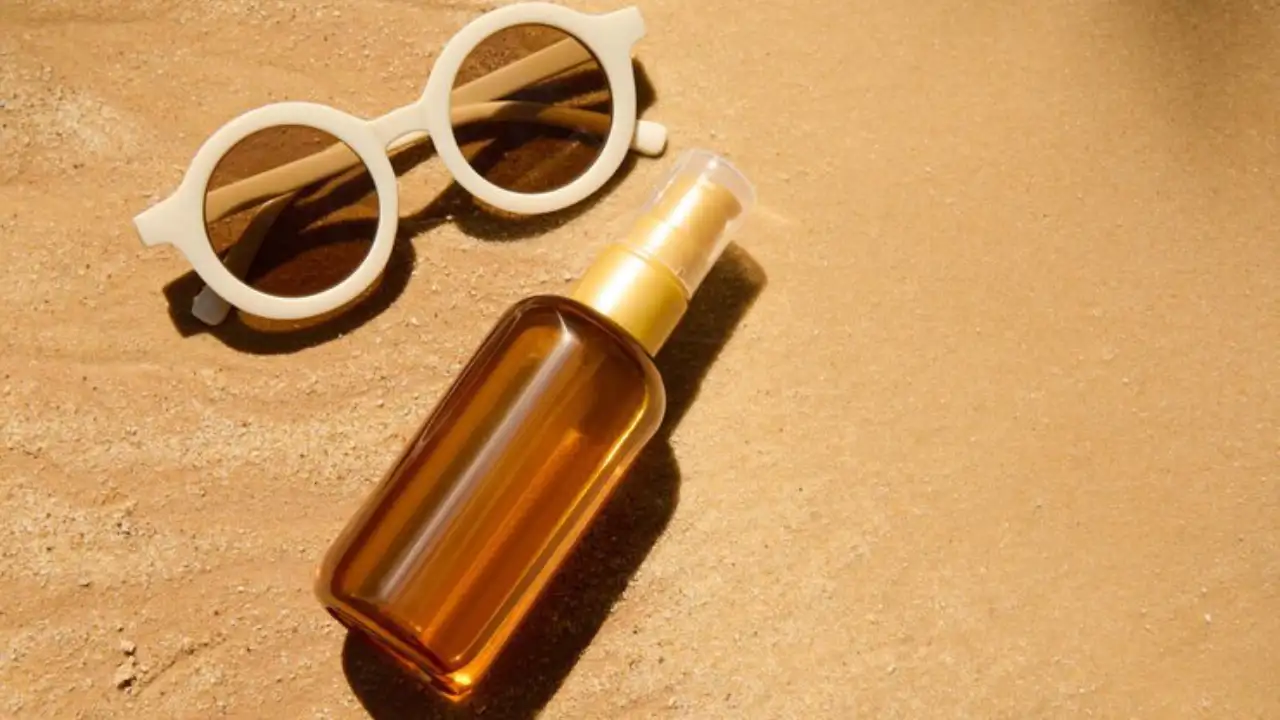How to use tanning oil to get a flawless desire look?
Tanning oil is designed to deepen your skin tone by enhancing how sunlight interacts with the skin. It helps you achieve a bronzed, glowing appearance more efficiently than sun exposure alone. When applied properly, tanning oil allows UV rays to reach pigment-producing cells, increasing melanin production and creating that golden tone many people seek.
Proper use matters because uneven application or lack of skin preparation often leads to patchy or uneven results. Overexposure can cause sunburn or premature skin aging. Many people make the mistake of using tanning oil as a replacement for sunscreen or applying it too thickly. A flawless tan requires technique, timing, and the right product.
Understand How Tanning Oil Works

Tanning oil works by intensifying your skin’s exposure to ultraviolet (UV) rays. When your skin absorbs these rays, melanocytes cells in the skin produce melanin, the pigment that darkens your complexion. The oil reduces reflection on your skin surface, allowing more rays to reach the deeper layers where melanin production occurs.
The process is natural but can be accelerated with oils that contain ingredients like carrot oil, coconut oil, or certain peptides that promote melanin production. Some modern formulas even include bronzing agents or shimmer that give you an instant glow before your natural tan develops.
Tanning oil vs. Sunscreen
While both products are used during sun exposure, their purposes differ. Sunscreen protects your skin by blocking or filtering UV rays, minimizing damage. Tanning oil, on the other hand, amplifies exposure to these rays to speed up tanning. Most tanning oils include minimal SPF—usually between 4 and 15—while sunscreens typically offer SPF 30 or higher. For that reason, you should not rely on tanning oil for protection alone.
Key Ingredients and Their Roles
- Coconut oil: deeply moisturizes and prevents dryness from sun exposure.
- Carrot seed oil: rich in beta-carotene, it enhances the depth of your tan.
- Aloe vera: soothes the skin and prevents irritation.
- SPF additives: offer basic protection but should be complemented with a separate sunscreen for long exposure.
The best tanning oil balances hydration with controlled UV exposure, helping your skin tan faster without becoming dry or irritated.
Choose the Right Tanning Oil for Your Skin Type

Not all tanning oils work the same for every skin type. Your complexion and sensitivity level determine which formula will give the best results while keeping your skin healthy.
For light skin, protection is essential. Choose tanning oils that include SPF 15 or higher to prevent burns. Look for lightweight, non-greasy formulas that hydrate without intensifying UV exposure too much. Products with ingredients like coconut oil or aloe vera provide nourishment while reducing irritation.
For medium to dark skin, you can choose deep tanning oils that accelerate melanin production more aggressively. These oils may contain lower SPF but produce faster, richer results. However, it’s still smart to apply sunscreen first to prevent hidden damage from UVA rays.
For sensitive skin, stick to hypoallergenic or organic formulas. Avoid artificial fragrances and harsh chemicals. Natural oils such as jojoba, avocado, or pure coconut oil provide a gentle, nourishing base.
Pre-Tanning Preparation
Preparation determines how evenly your tan develops. Start by exfoliating your skin at least one day before tanning. Removing dead cells ensures that your tan builds on fresh, smooth skin, not flaky or dry patches. Use a mild scrub or exfoliating mitt and focus on rough areas like elbows, knees, and ankles.
After exfoliation, moisturize those same dry areas lightly. Hydrated skin absorbs tanning oil more evenly and prevents streaking. However, avoid applying thick creams or greasy lotions immediately before tanning. Heavy formulas can create a barrier that stops the oil from penetrating properly.
Make sure your skin is clean and dry before applying tanning oil. Sweat or leftover body products can interfere with absorption and cause uneven results.
How to Apply Tanning Oil Properly
Once your skin is prepared, it’s time to apply the tanning oil. Pour a small amount into your hands and rub it gently between your palms. Apply it evenly using circular motions to ensure consistent coverage. Begin from your legs and move upward, paying extra attention to spots that are easily missed, such as the sides of your torso and the backs of your arms.
Avoid over-applying. Too much oil can leave your skin greasy and may even block sunlight in certain areas. A thin, even layer works best.
Reapply every two to three hours, especially after swimming, sweating, or towel drying. Most tanning oils are not water-resistant, so they can wash off easily. This reapplication maintains effectiveness and protects your skin from drying out.
If your oil contains shimmer or bronzing tint, blend carefully to avoid visible streaks. Always wash your hands afterward to prevent staining your palms.
Best Time and Place to Use Tanning Oil

Timing and environment have a big impact on the final result. The safest hours to tan are before 10 a.m. and after 4 p.m., when UV rays are less intense. During these times, the sun still promotes melanin production but reduces the risk of burns.
Choose a comfortable location with steady sunlight like the beach, poolside, or a private garden. Avoid midday sun, as UVB rays are strongest then and can damage your skin quickly.
Rotate your body every 15 to 30 minutes to ensure even exposure. Use a towel or mat to avoid direct contact with hot surfaces, which can irritate your skin.
Keep track of time. Overexposure doesn’t deepen your tan faster; it simply increases the risk of redness and peeling. Controlled exposure with proper intervals gives smoother, longer-lasting results.
Combine Tanning Oil with Sun Protection
Protection and tanning go together. Many people believe tanning oil alone is enough, but UV damage can happen quickly. Always pair tanning oil with sunscreen that has broad-spectrum SPF 30 or higher.
If your tanning oil has minimal SPF, apply sunscreen first. Wait 15 to 20 minutes to let it absorb fully, then apply the oil on top. This method lets you tan safely without compromising protection.
The best tanning oil will often include both moisturizing and protective ingredients, but this protection is usually mild. Reapply sunscreen and oil after swimming or extended sun exposure to maintain both effects.
For extended outdoor tanning, wear sunglasses and a wide-brimmed hat to protect sensitive areas like your face and scalp.
After-Tanning Care for a Lasting Glow
After tanning, your skin continues to develop color for several hours. Proper aftercare helps maintain that glow while preventing dryness or peeling.
Rinse your body gently to remove any remaining oil and sweat. Avoid using hot water or harsh soaps immediately after tanning, as they can strip away natural oils and irritate your skin. Instead, use lukewarm water and a mild cleanser.
Once clean, apply a soothing after-sun lotion or gel that contains aloe vera, coconut oil, or vitamin E. These ingredients replenish lost moisture and calm any irritation from UV exposure.
Keep your skin hydrated over the next few days. Moisturize daily to prevent flaking, which can cause your tan to fade unevenly. Drink plenty of water to maintain skin elasticity and tone. Avoid exfoliating for at least 24 hours after tanning so your new color settles evenly.
Common Mistakes to Avoid
Even a good product can give poor results if misused. Avoiding common mistakes helps you achieve the flawless tan you want.
Many people use tanning oil without any SPF protection, especially during peak sunlight hours. This is risky. Even if you have darker skin, UVA and UVB rays still cause long-term damage. Always include some level of sun protection.
Another mistake is spending too long in the sun. Tanning oil increases your skin’s absorption of UV rays, so the process works faster. Prolonged exposure leads to burns, dryness, and accelerated aging.
Skipping exfoliation before tanning is another major cause of uneven tone. Dead skin cells block oil absorption and make your tan patchy. Finally, over-applying oil creates an uneven surface that prevents consistent coloring.
In short, moderation, protection, and preparation are the three rules to remember every time you tan.
Conclusion
A flawless tan is not about spending hours under the sun but about how well you prepare, apply, and protect your skin. Start with exfoliation, choose the best tanning oil for your skin type, apply it evenly, and reapply regularly. Stick to safe tanning hours and always include SPF protection in your routine.
After tanning, hydrate and care for your skin so your glow lasts longer. By following these steps, you’ll achieve an even, radiant tone while keeping your skin healthy.
When used correctly, tanning oil is one of the simplest and most effective ways to enhance your natural complexion and achieve that smooth, sun-kissed look safely.
Frequently Asked Questions
How long does it take to see results?
With proper sun exposure, you can start noticing color within a few hours. A deeper tan develops over 24 to 72 hours as melanin levels rise.
Can tanning oil be used indoors or with tanning beds?
No. Tanning oils are made for natural sunlight. Indoor tanning beds emit stronger UVA rays, which can react unpredictably with oils and increase burn risk.
Does tanning oil work without sun exposure?
It does not. The oil enhances your natural response to UV rays. Without sunlight or artificial UV, it will only act as a moisturizer or shimmer.
How often should I reapply tanning oil?
Every two to three hours, or after swimming, sweating, or toweling off. This keeps your skin hydrated and the oil effective.
Can I mix tanning oil with sunscreen?
You can, but it’s better to apply them separately. Use sunscreen first, let it absorb, then apply tanning oil. This gives protection without blocking tanning effects.






